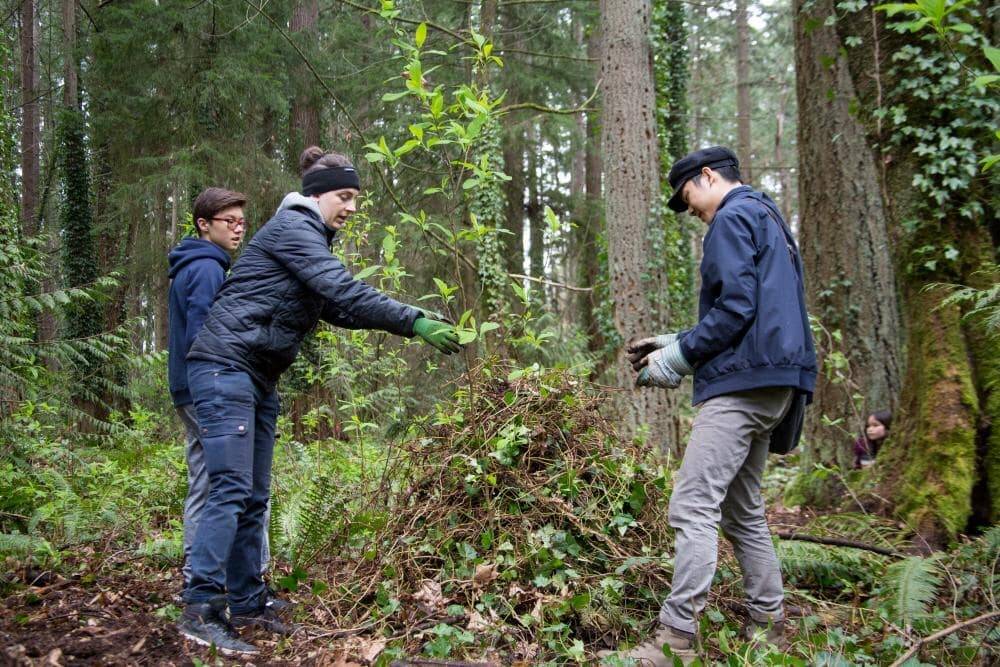By Ella Will, For the Reporter
For more than 20 years, the City of Mercer Island has been working to restore Pioneer Park.
Pioneer Park is Mercer Island’s most sizable forest open space, encompassing 113 acres. It is adjacent to the Engstrom Open Space, which is 7 acres. The park houses 6.6 miles of trails and several playgrounds.
The City of Mercer Island has an ongoing Restoration Program for all of the Island’s parks, and the largest one takes place in Pioneer Park. Pioneer Park’s forest management plan includes sanity retention programs, habitat restoration, biodiversity conservation and climate resilience. This plan is executed to sustain a healthy ecosystem by mainly removing invasive/non-native plants threatening Mercer Island wildlife.
Since the project began, community efforts and support have kept Pioneer Park accessible and healthy. For example, volunteer events in recent years have built upon work of the past and significantly pushed to remove invasive English Ivy from the bases of trees in the park.
“We want to remove the ivy because it is aggressive. It starts at the bases of our trees and grows up their trunks, weighing down their canopies and making it much more likely for those trees to fall over or degrading their health over time,” said Lizzy Stone, Natural Resource Project Manager at the City of Mercer Island.
Community volunteers have also worked to manage weedy trees/bushes such as holly and cherry laurel to stop them from taking over the understory and allow new plants to regenerate.
The city’s primary focus is on the comprehensive removal of invasive species, a three-year process for every park section. The initial removal happens in the first year. The second and third year, they continue working on the spaces before a four-year recovery period and long-term maintenance.
The city seeks help from contractors, volunteer events, and seasonal park crews to achieve comprehensive removal.
“We did ten and a half acres of comprehensive removal last year and a little more than nine acres the year before. Our goals, set out by forest management plans and the 2022 parks levy, are to incorporate all the parks in that restoration,” Stone said.
The ultimate goal of the Pioneer Park Restoration Program is to restore the park’s ecosystem to a healthy state. Stone said the project emphasizes native plants because they have been here for hundreds of years, evolving alongside each other and the microbes, insects, birds, and small mammals that rely on them for food.
“We want to plant a diversity of native plants that are appropriate for the park’s ecosystem so that the plants and animals can live in balance with each other, so we can have a complex habitat to accommodate many different types of critters,” Stone said.
For Islanders wondering how to get involved in the Pioneer Park restoration, the city hosts frequent volunteer events, all posted in the city’s parks and recreation calendar. The events include removing/digging up ivy, spreading mulch, tending to the plant nursery at Luther Burbank Park, and more. The city also provides educational workshops in the winter months with highly trained volunteer stewards.


